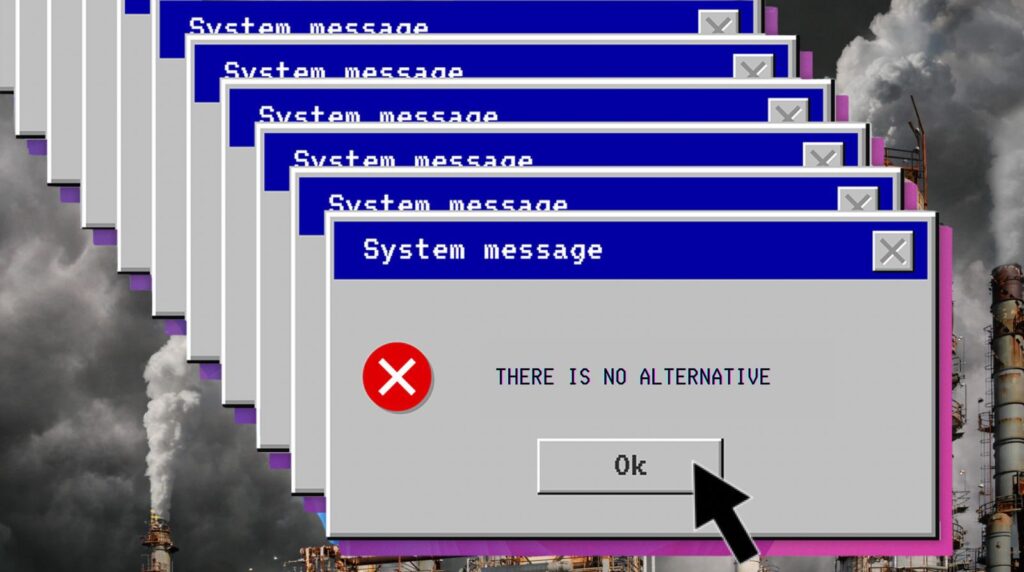As news outlets across America take a more rigorous look at shale gas and fracking issues, it’s encouraging to see how the media coverage is finally starting to cut through the oil industry’s misleading rhetoric to explore the realities of the myth of gas as a viable ‘bridge fuel.’
The gas industry’s loud-mouthed front group, Energy In Depth, repeatedly attacked The New York Times for their excellent Drilling Down series last year, focusing particular ire on journalist Ian Urbina. EID’s penchant for attacking the messenger shows no sign of letting up in 2012, but as other news outlets look more closely, they are not only confirming what the NY Times series found, but also adding additional evidence of the many problems with shale gas development.
The latest effort from Bloomberg News, “Shale Bubble Inflates on Near-Record Prices,” illustrates how the media’s grasp of the unconventional energy industry landscape has evolved and improved in recent months.
This excellent reporting by Bloomberg confirms many of the facts that The New York Times reported last summer in “Insiders Sound an Alarm Amid a Natural Gas Rush” and “Behind Veneer, Doubt on Future of Natural Gas.”
While many major outlets have covered the myriad environmental and public health risks of fracking and related drilling practices, the NY Times and now Bloomberg have both exposed the fact that the economics of risky and expensive unconventional gas recovery simply don’t match up with industry geologists’ claims of a “nearly limitless” supply.
Investors are increasingly taking notice of the unpredictable nature of this industry and questioning its risky behavior. Is there really as much gas down there as the industry claims? If so, how much is economically recoverable?
Remember that oil and gas companies have purchased or leased an enormous amount of land without any assurance that it will produce anything. Now they’re drilling multi-million dollar wells to explore, and often blanking or failing to meet expectations when they find recoverable gas.
Let’s look at the similarities in what both the Times and Bloomberg found in their investigations.
The Times reported that industry officials were quietly saying that shale gas has inherent risks, geology varies and the data is sparse. An excerpt from the Times article ‘Insiders Sound an Alarm Amid a Natural Gas Rush’:
“…the gas may not be as easy and cheap to extract from shale formations deep underground as the companies are saying, according to hundreds of industry e-mails and internal documents and an analysis of data from thousands of wells. …
Company data for more than 10,000 wells in three major shale gas formations raise further questions about the industry’s prospects…The data show that while there are some very active wells, they are often surrounded by vast zones of less-productive wells that in some cases cost more to drill and operate than the gas they produce is worth. Also, the amount of gas produced by many of the successful wells is falling much faster than initially predicted by energy companies, making it more difficult for them to turn a profit over the long run. If the industry does not live up to expectations, the impact will be felt widely. Federal and state lawmakers are considering drastically increasing subsidies for the natural gas business in the hope that it will provide low-cost energy for decades to come…There is undoubtedly a vast amount of gas in the formations. The question remains how affordably it can be extracted.” (emphases mine)
Recall that the industry front group Energy In Depth and other industry outlets tried to smear Urbina and the Times for airing concerns from market and industry analysts about shale gas economics back in June. Energy In Depth accused Urbina of using “tricks” and EID’s Marcellus Initiative quoted Chesapeake Energy CEO Aubrey McClendon claiming he “sums up the fallacy in the NYT’s premise [on economically recoverable shale gas] quite succinctly.”
But in Tuesday’s Bloomberg piece, industry folks are now stepping forward and making awfully similar points. For example, here is what Bloomberg reported:
“The quirky nature of shale geology means the risks are high that an investment made in a sparsely drilled prospect will go bust, Nikhanj said. Rock density, porosity and pressure levels vary widely within each field, which means one parcel may hold enough fuel to justify prices of $30,000 or $50,000 an acre, while the adjacent land is almost worthless to drillers.”…
“Surging prices for oil and gas shales, in at least one case rising 10-fold in five weeks, are raising concern of a bubble as valuations of drilling acreage approach the peak set before the collapse of Lehman Brothers Holdings Inc.”…
“As competition among buyers intensifies, overseas investors are paying top dollar for fields where too few wells have been drilled to assess potential production, said Sven Del Pozzo, a senior equity analyst at IHS Inc. (IHS)”…
“I don’t feel confident that the prices being paid now are justified,” Del Pozzo said in a telephone interview from Norwalk, Connecticut. “I’m wary.”
The Times also published dozens of emails from industry and regulators confirming the risk of shale investment:
“They discuss the uncertainties about how long the wells will be productive as well as the high prices some companies paid during the land rush to lease mineral rights. They also raise concerns about the unpredictability of shale gas drilling.”
And now look at the Bloomberg piece. It also calls attention to the hazards of investing huge sums before the costs of developing the shale gas plays are understood:
“Hunt, the closely held Dallas company founded by Texas tycoon H.L. Hunt in 1934, has only drilled ‘a handful’ of wells in its Eagle Ford shale acreage, which means it doesn’t yet know how extensive or rich those holdings are, Del Pozzo said. Similarly, because drilling in the Utica shale in the U.S. northeast still is in its infancy, the geological characteristics and potential bounty of the region are hard to assess, said Manuj Nikhanj, head of energy research at ITG Investment Research Inc.
‘The big risk is that people are jumping in with both feet too early,’ Nikhanj said in a telephone interview from Calgary. “‘Of course, the other side of that is that if they wait, they risk missing out on what could turn out to be a big deal.’”
…U.S. gas explorers including Chesapeake and Devon Energy Corp. (DVN) are selling interests in shale fields to international energy companies such as Total and Sinopec to finance drilling on leases acquired during a “massive land grab” in 2007 and 2008 as oil and gas prices soared to record highs, O’Neill of Bloomberg Industries said.
The plunge in energy prices that followed Lehman’s bankruptcy and subsequent global financial crisis left operators like Chesapeake too poor to fulfill clauses that set deadlines for finishing wells on pain of forfeiting the leases, O’Neill said.
As of Tuesday night, the folks at Energy In Depth have not uttered a peep about the Bloomberg findings.
And there are plenty of other examples of media roundly debunking the previous defensive claims of industry and their captive regulators.
For example, an article this week on Seeking Alpha took a close look at Cabot Oil and Gas’s prospects for 2012, and concluded that the company could not maintain its growth, and share prices would stabilize or drop despite the fact that Cabot drilled 16 of the 20 best Marcellus wells last year.
“In sum, COG is a fast grower, but it is heading down an unsustainable path. It cannot sustain its current growth without incurring a lot of new debts by buying new land, etc. Such debts in themselves would tend to make investors more wary of the stock,” wrote the analyst. “Showing good results now to the detriment of a better longer term plan is a losing long term strategy in this market.”
For the past year, Pennsylvania has been arguing that it has everything under control.
Remember the vitriolic reaction to this NY Times story on PA wastewater problems? Well, the Pittsburgh Post-Gazette ran a story this Monday revealing that the Department of Environmental Protection lost track of nearly 500 wells in Pennsylvania. Wells were drilled, but DEP records are missing or wrong – meaning that state regulators do not even know how many Marcellus wells are in Pennsylvania. See “DEP‘s Marcellus Shale drilling numbers do not add up.”
On the same day, the Associated Press reported that Cabot Oil and Gas polluted three water wells in Susquehanna County with methane gas.
Though there is still a long way to go, there is no denying that media analysis of the unconventional gas industry has improved over the past year. More journalists are asking tough questions and challenging the industry’s talking points. When news outlets make such an informed attempt, they are able to cut through the industry’s smoke screens.
This level of scrutiny should be standard practice everywhere instead of the bogus “balance” frame that many outlets embrace, allowing industry PR pollution to contaminate the public conversation. It’s promising to see that some journalists and news outlets are waking up to this.
Kudos to Bloomberg and other outlets that are exposing the shale gas bubble and the other dangerous distractions inherent in the “gas as bridge fuel” myth that is putting off the truly transformative switch to a clean energy economy.
Image credit: Complot | Shutterstock
Subscribe to our newsletter
Stay up to date with DeSmog news and alerts






